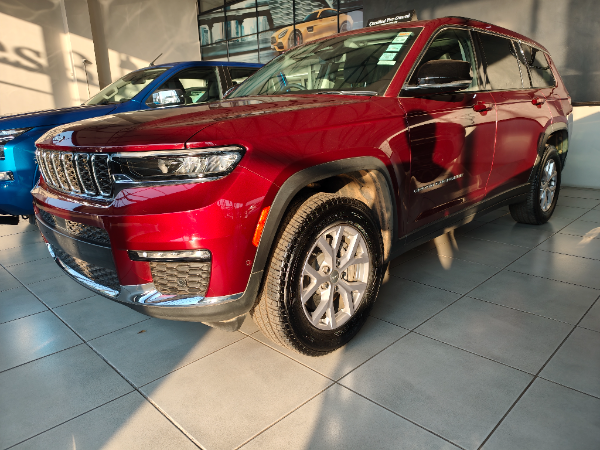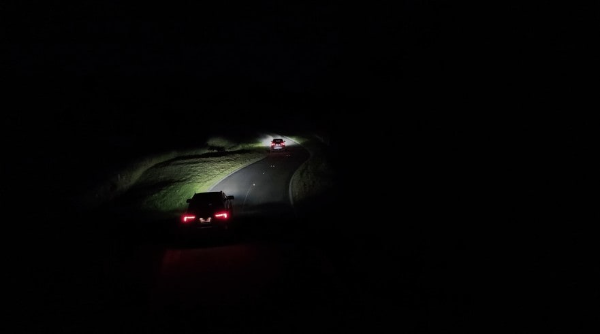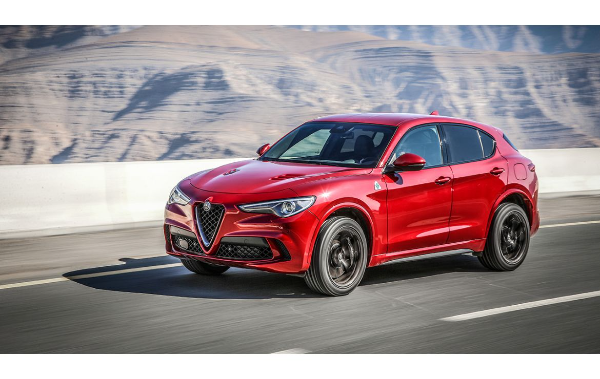Every drive is an adventure with the Land Rover Defender 110 D300 X
The latest Land Rover Defender tries to pay homage to the Land Rover that started it all. Anything bearing the Defender name has rather large boots to fill. Has the latest incarnation of this nameplate hit the mark or failed miserably?
Every decade or so, a model is released that is so innovative, unique and striking, that the automotive world is left dumbstruck and in awe, unable to truly comprehend the gravitas of its presence. We saw this with the likes of the Audi TT, the Golf 5 GTI, Toyota FJ Cruiser, and even the Range Rover Evoque. These models set the tone for the years to come and many would argue that they were the catalysts for future designs. In more recent times, it is the Land Rover Defender that has piqued our interest and I do not think we have yet to truly appreciate the magnitude of its impact.
Admittedly, the latest Defender is a shameless homage to the Defender Ninety and One-Ten as even the Series III that preceded those. It has been met with a mixed reception though. There are those that believe it is a watered-down, anodyne mockery of the original, while there are those that cannot help but sing its praises enough. I have to admit that I am in the latter camp, after having defected from the former.
Styling
It is the styling that makes the new Defender the presence it is. It is unmistakably Defender with a boxy approach to the design, envisioned using set- and T-squares rather than compasses and French curves. The large, upright glasshouse has black pillars, leaving the roof floating ominously above the straight edges of the body. The sheet metal of the wheel arches rolls over and around the front end, improving aerodynamics and are punctuated by the LED headlights with a circular LED DRL element, echoing the 7-inch sealed-beam headlights of the previous Defender generations. The grille is a muscular affair, resting above a purposeful-looking mesh grille and skid plate arrangement and topped with the iconic Defender name.
The upright theme continues at the rear with a waterfall drop only broken by the tailgate-mounted spare wheel. The new Defender certainly looks like it was simply cut off of a tube of Defenders, the rear panel dropping near vertically. Small, LED rear lamps look like nothing more than push-buttons and on our Defender X test model, were smoked for a more monochromatic look.
The package is rounded off with large, 20-inch wheels, shod with sizeable 255/60R20 Goodyear Wrangler tyres. These AT tyres are not half as noisy as one would expect them to be, but you will still hear more from them than you would a better road-biased tyre when commuting on the highway.
Space & Interior
The new Defender is a sizeable machine. At just over 5-metres long, the 110 takes up a fair deal of real estate. This girth is converted into interior space, thankfully, and with the upright design of the greenhouse, headroom and perceived space are excellent. My biggest gripe with the Defender 90 is the ingress to the rear. Simply impossible unless you are an Eastern block gymnast, 5-years old, or made from rubber. It is incomprehensibly painful, trying to get into the back of a Defender 90. In the 110, that is less of an issue and the rear doors make taking friends and family with you on your off-road cohorts far more bearable.
Our test model had the more sombre interior trimmings with the crash pads and dashboard trims coated in the Ebony option. I have spent time with the Defender 90 that was kitted out with the beige, Acorn trim and the lighter hues certainly helped the cabin feel roomier and far airier. Nevertheless, despite the dark, sombre execution of this Defender 110's trimmings, it remained a comfortable, stylish and convenient place to pass the time. Every time you enter the cabin, it feels like an occasion. For me, that is the true mark of a special vehicle. The Defender, with its combination of retro styling cues, tasteful nods to tradition and modern technology, invokes a certain feeling that you just do not get from all cars.
For those that are planning the longer trips and adventures, you get a substantial 857-litres of storage space in the boot, expandable to 1946-litres when you rearrange the seats.
Comfort & Convenience
Comfort is high on the features list of the new Defender. Thanks to its air suspension that can be raised or lowered for comfort and off-road excursions. The regular ride height offers 218 mm of ground clearance and that is bumped to 290 mm of clearance when you select the off-road mode or raise the suspension separately. The intelligent programming of the Terrain Response 2 suspension system allows the Auto mode to automatically adjust to the road surface and undulations to help iron out any unwanted articulation. It manages to do this without making the Defender feel top-heavy, successfully keeping it planted through the turns.
The Defender is fitted with JLR's latest Pivi Pro infotainment system. I am rather fond of this unit and particularly appreciate the rapid connectivity provided by the secondary power unit that boots the system up as soon as you open the door. This helps ensure that your phone is connected and streaming by the time you wish to set off. Naturally, this system with its large full-colour touchscreen is Android Auto and Apple CarPlay equipped, allowing you to seamlessly integrate the Defender into your digital life.
It does more than just slot into your life and the Defender can actually augment it. There is a domestic outlet for those that wish to run camping fridges, numerous 12v outlets and USB charging ports, and the ClearSight rear-view mirror ensures that you can see behind you, even when loaded up to the hilt (or when trying to look past the spare wheel).
Performance
The D300 model is the largest diesel engine one can get in the Defender and frankly, it is the only one to have. This freight train of a power plant produces 221 kW at 4 000 RPM and a meaty 650 Newtons from as low as 1 500 RPM. Even from just off of idle, the D300 pulls strong and relentlessly with the torque only starting to taper off towards the upper end of the rev range. The Defender 110 D300 X will do the 0 - 100 km/h sprint in 7-seconds, a time that is more than respectable for a machine of this stature. If you really have to be the fastest on the block, might I suggest the V8 version that will do the standing sprint in only 5.4-seconds?
The way that the D300 hikes up its skirt and stretches its legs when you stand on the loud pedal is something to experience. Smooth, silky acceleration as the nose lifts into the air and accelerates towards the horizon. It is rather addictive and reminds me of the power delivery that one used to get from the GM Duramax engines, an engine that I am rather fond of.
This 3.0-litre straight-six turbodiesel power plant is mated to an 8-speed automatic gearbox that quietly does its thing in the background without requiring any driver intervention. It is best to leave it to its own devices and let it figure out what needs to be done. The only time you will manually select gears is if you really want to make life difficult for yourself off-road because even then it is rather clever and able to anticipate the gear you require.
Fuel Economy
As addictive as this power delivery is, it comes at a price. Rising fuel costs are not helping the cause of large displacement, high-power engines these days and while Land Rover claims an average combined fuel consumption of only 8.0 l/100km, our combined driving exploits saw use hover around the 11-mark instead.
The flat underbody of the Defender not only protects its undercarriage from damage but is also said to help with the aerodynamics and I do not doubt that on a long cruise, the Defender will be able to return more than acceptable fuel consumption figures.
Safety
Occupant safety is taken care of on two fronts. The passive safety systems include a high-strength aluminium monocoque construction for the body, helping increase rigidity and safety cell integrity. While this may be a radical departure from the body-on-frame construction of the Defenders gone by, it does help make the new Defender a safer vehicle. It is complemented by an array of 6 airbags with ISOFIX mountings in both the front and rear seats for applicable child seats.
Driver assistance systems are in no short supply either. Drivers and passengers alike benefit from Dynamic Stability Control, ESC, ABS, Emergency Braking, Blind Spot Assist, 360-degree camera, Lane Keep Assist, Adaptive Cruise Control, and Rear Collision Monitoring. Venturing off-road will see you safeguarded by the Wading Control, Low Traction Launch, Roll Stability Control and Hill Descent Control.
Competitors
In all honesty, when it comes to a competitor that is not part of the JLR stable that has similar off-road credentials, there is not much out there. Yes, I know that a Fortuner or Everest is going to offer similar off-road capabilities but they pale in comparison to the level of luxury and appointment one finds in the Defender. They also lack that special something that makes the Defender a simply cool vehicle. I can only think that the likes of a Toyota Land Cruiser 300 or Land Cruiser Prado will be able to compare on equal footing.
Verdict
It is rather hard to put one's finger on what it is exactly that makes the Defender so desirable. It is the one car that I miss having in the driveway. There's a special something to this vehicle that is tough to quantify; is it the styling? The unmistakable nod to the generation preceding? Or is it the modern execution and tech? It could very well be the drivetrain and powerplant but one is never truly convinced. It is one of those packages that show how much thought can go into a vehicle when there's the shroud of heritage so firmly attached to it that it cannot be ignored.
The 110 is the more practical example if you absolutely have to have access to the rear but the 90 is the go-anywhere, park anywhere, do anything mountain goat that we always knew the Defender 90 to be, even several decades ago.
Every decade or so, a model is released that is so innovative, unique and striking, that the automotive world is left dumbstruck and in awe, unable to truly comprehend the gravitas of its presence. We saw this with the likes of the Audi TT, the Golf 5 GTI, Toyota FJ Cruiser, and even the Range Rover Evoque. These models set the tone for the years to come and many would argue that they were the catalysts for future designs. In more recent times, it is the Land Rover Defender that has piqued our interest and I do not think we have yet to truly appreciate the magnitude of its impact.
Admittedly, the latest Defender is a shameless homage to the Defender Ninety and One-Ten as even the Series III that preceded those. It has been met with a mixed reception though. There are those that believe it is a watered-down, anodyne mockery of the original, while there are those that cannot help but sing its praises enough. I have to admit that I am in the latter camp, after having defected from the former.
Styling
It is the styling that makes the new Defender the presence it is. It is unmistakably Defender with a boxy approach to the design, envisioned using set- and T-squares rather than compasses and French curves. The large, upright glasshouse has black pillars, leaving the roof floating ominously above the straight edges of the body. The sheet metal of the wheel arches rolls over and around the front end, improving aerodynamics and are punctuated by the LED headlights with a circular LED DRL element, echoing the 7-inch sealed-beam headlights of the previous Defender generations. The grille is a muscular affair, resting above a purposeful-looking mesh grille and skid plate arrangement and topped with the iconic Defender name.
The upright theme continues at the rear with a waterfall drop only broken by the tailgate-mounted spare wheel. The new Defender certainly looks like it was simply cut off of a tube of Defenders, the rear panel dropping near vertically. Small, LED rear lamps look like nothing more than push-buttons and on our Defender X test model, were smoked for a more monochromatic look.
The package is rounded off with large, 20-inch wheels, shod with sizeable 255/60R20 Goodyear Wrangler tyres. These AT tyres are not half as noisy as one would expect them to be, but you will still hear more from them than you would a better road-biased tyre when commuting on the highway.
Space & Interior
The new Defender is a sizeable machine. At just over 5-metres long, the 110 takes up a fair deal of real estate. This girth is converted into interior space, thankfully, and with the upright design of the greenhouse, headroom and perceived space are excellent. My biggest gripe with the Defender 90 is the ingress to the rear. Simply impossible unless you are an Eastern block gymnast, 5-years old, or made from rubber. It is incomprehensibly painful, trying to get into the back of a Defender 90. In the 110, that is less of an issue and the rear doors make taking friends and family with you on your off-road cohorts far more bearable.
Our test model had the more sombre interior trimmings with the crash pads and dashboard trims coated in the Ebony option. I have spent time with the Defender 90 that was kitted out with the beige, Acorn trim and the lighter hues certainly helped the cabin feel roomier and far airier. Nevertheless, despite the dark, sombre execution of this Defender 110's trimmings, it remained a comfortable, stylish and convenient place to pass the time. Every time you enter the cabin, it feels like an occasion. For me, that is the true mark of a special vehicle. The Defender, with its combination of retro styling cues, tasteful nods to tradition and modern technology, invokes a certain feeling that you just do not get from all cars.
For those that are planning the longer trips and adventures, you get a substantial 857-litres of storage space in the boot, expandable to 1946-litres when you rearrange the seats.
Comfort & Convenience
Comfort is high on the features list of the new Defender. Thanks to its air suspension that can be raised or lowered for comfort and off-road excursions. The regular ride height offers 218 mm of ground clearance and that is bumped to 290 mm of clearance when you select the off-road mode or raise the suspension separately. The intelligent programming of the Terrain Response 2 suspension system allows the Auto mode to automatically adjust to the road surface and undulations to help iron out any unwanted articulation. It manages to do this without making the Defender feel top-heavy, successfully keeping it planted through the turns.
The Defender is fitted with JLR's latest Pivi Pro infotainment system. I am rather fond of this unit and particularly appreciate the rapid connectivity provided by the secondary power unit that boots the system up as soon as you open the door. This helps ensure that your phone is connected and streaming by the time you wish to set off. Naturally, this system with its large full-colour touchscreen is Android Auto and Apple CarPlay equipped, allowing you to seamlessly integrate the Defender into your digital life.
It does more than just slot into your life and the Defender can actually augment it. There is a domestic outlet for those that wish to run camping fridges, numerous 12v outlets and USB charging ports, and the ClearSight rear-view mirror ensures that you can see behind you, even when loaded up to the hilt (or when trying to look past the spare wheel).
Performance
The D300 model is the largest diesel engine one can get in the Defender and frankly, it is the only one to have. This freight train of a power plant produces 221 kW at 4 000 RPM and a meaty 650 Newtons from as low as 1 500 RPM. Even from just off of idle, the D300 pulls strong and relentlessly with the torque only starting to taper off towards the upper end of the rev range. The Defender 110 D300 X will do the 0 - 100 km/h sprint in 7-seconds, a time that is more than respectable for a machine of this stature. If you really have to be the fastest on the block, might I suggest the V8 version that will do the standing sprint in only 5.4-seconds?
The way that the D300 hikes up its skirt and stretches its legs when you stand on the loud pedal is something to experience. Smooth, silky acceleration as the nose lifts into the air and accelerates towards the horizon. It is rather addictive and reminds me of the power delivery that one used to get from the GM Duramax engines, an engine that I am rather fond of.
This 3.0-litre straight-six turbodiesel power plant is mated to an 8-speed automatic gearbox that quietly does its thing in the background without requiring any driver intervention. It is best to leave it to its own devices and let it figure out what needs to be done. The only time you will manually select gears is if you really want to make life difficult for yourself off-road because even then it is rather clever and able to anticipate the gear you require.
Fuel Economy
As addictive as this power delivery is, it comes at a price. Rising fuel costs are not helping the cause of large displacement, high-power engines these days and while Land Rover claims an average combined fuel consumption of only 8.0 l/100km, our combined driving exploits saw use hover around the 11-mark instead.
The flat underbody of the Defender not only protects its undercarriage from damage but is also said to help with the aerodynamics and I do not doubt that on a long cruise, the Defender will be able to return more than acceptable fuel consumption figures.
Safety
Occupant safety is taken care of on two fronts. The passive safety systems include a high-strength aluminium monocoque construction for the body, helping increase rigidity and safety cell integrity. While this may be a radical departure from the body-on-frame construction of the Defenders gone by, it does help make the new Defender a safer vehicle. It is complemented by an array of 6 airbags with ISOFIX mountings in both the front and rear seats for applicable child seats.
Driver assistance systems are in no short supply either. Drivers and passengers alike benefit from Dynamic Stability Control, ESC, ABS, Emergency Braking, Blind Spot Assist, 360-degree camera, Lane Keep Assist, Adaptive Cruise Control, and Rear Collision Monitoring. Venturing off-road will see you safeguarded by the Wading Control, Low Traction Launch, Roll Stability Control and Hill Descent Control.
Competitors
In all honesty, when it comes to a competitor that is not part of the JLR stable that has similar off-road credentials, there is not much out there. Yes, I know that a Fortuner or Everest is going to offer similar off-road capabilities but they pale in comparison to the level of luxury and appointment one finds in the Defender. They also lack that special something that makes the Defender a simply cool vehicle. I can only think that the likes of a Toyota Land Cruiser 300 or Land Cruiser Prado will be able to compare on equal footing.
Verdict
It is rather hard to put one's finger on what it is exactly that makes the Defender so desirable. It is the one car that I miss having in the driveway. There's a special something to this vehicle that is tough to quantify; is it the styling? The unmistakable nod to the generation preceding? Or is it the modern execution and tech? It could very well be the drivetrain and powerplant but one is never truly convinced. It is one of those packages that show how much thought can go into a vehicle when there's the shroud of heritage so firmly attached to it that it cannot be ignored.
The 110 is the more practical example if you absolutely have to have access to the rear but the 90 is the go-anywhere, park anywhere, do anything mountain goat that we always knew the Defender 90 to be, even several decades ago.









